Did you know that summer squash is not only delicious but also incredibly versatile in the kitchen? Whether you’re grilling, sautéing, baking, or eating it raw, there are numerous ways to enjoy this vibrant vegetable. With various types, such as zucchini and yellow summer squash, summer squash offers a world of culinary possibilities.
In this article, I will take you on a journey to explore the different aspects of summer squash. We will dive into its various types, the benefits it provides, how to grow it in your own garden, and delicious recipes that will get your taste buds tingling. Get ready to add color and nutrition to your meals with the joys of summer squash!
Key Takeaways:
- Summer squash is a versatile vegetable that can be enjoyed in a variety of ways.
- There are different types of summer squash, including zucchini and yellow summer squash, each offering distinct flavors and textures.
- Summer squash is rich in essential nutrients, such as vitamin B6 and vitamin C, and can boost your overall well-being.
- Growing summer squash in your own garden requires proper soil preparation, regular watering, and appropriate spacing.
- From grilling and baking to adding it to salads or soups, there are endless possibilities when it comes to cooking with summer squash, so get creative!
Types of Summer Squash
Summer squash offers a wide range of delicious varieties, each with its own unique flavor and texture. Let’s explore the different types of summer squash and discover how they can elevate your culinary creations.
Zucchini
One of the most popular types of summer squash is zucchini. With its vibrant green color and mild flavor, zucchini is a versatile ingredient that can be used in both savory and sweet dishes. Whether you sauté it with garlic and herbs or bake it into a moist bread, zucchini adds a delightful touch to any recipe.
Yellow Summer Squash
Another common variety of summer squash is yellow summer squash. Known for its sunny yellow color and tender flesh, this squash has a slightly sweet and buttery flavor. It is often used in stir-fries, soups, and gratins, offering a burst of color and flavor to the dish.
Pattypan Squash
Pattypan squash, also known as scallop squash, is a small, round summer squash with a unique shape. Its scalloped edges and vibrant colors make it a visually appealing addition to any meal. Pattypan squash can be roasted, stuffed, or grilled, bringing a delightful taste and texture to your plate.
Crookneck Squash
Crookneck squash is characterized by its curved neck and bright yellow skin. Its creamy flesh has a rich flavor and a buttery texture. This squash variety is perfect for grilling, sautéing, or adding to pasta dishes, imparting a delicious taste and vibrant color to your recipes.
White Scallop Squash
White scallop squash, also known as pattypan squash, is similar to the yellow variety but with a pale white color. It has a tender texture and delicate, mild flavor. White scallop squash is often used in stir-fries, salads, or as a beautiful decorative element in culinary presentations.
No matter which type of summer squash you choose, incorporating these vibrant vegetables into your meals adds both visual appeal and delightful flavors. Try experimenting with different varieties to discover your favorites and unlock a world of culinary possibilities.
Benefits of Summer Squash
Summer squash not only adds a burst of vibrant color to your plate, but it also provides a host of health benefits. Packed with essential nutrients, incorporating this versatile vegetable into your meals can contribute to your overall well-being.
Vitamin B6 for Skin Health and Red Blood Cells
One of the standout benefits of summer squash is its rich content of vitamin B6. This essential vitamin plays a crucial role in maintaining healthy skin and promoting the production of red blood cells. By including summer squash in your diet, you can nourish your skin from within and support the proper functioning of your circulatory system.
Vitamin C for Wound Healing
In addition to vitamin B6, summer squash is a great source of vitamin C. This powerful antioxidant is known for its ability to boost the immune system and aid in wound healing. By enjoying summer squash, you can enhance your body’s natural healing processes and protect your cells from oxidative stress.
Beta-Carotene for Eye Health
The vibrant yellow and green color of summer squash comes from a compound called beta-carotene, which is converted into vitamin A in the body. Vitamin A is essential for maintaining good eye health and may help reduce the risk of age-related macular degeneration and cataracts. So, by indulging in summer squash, you can support your vision and protect your eyes from potential damage.
With its impressive nutritional profile, summer squash is a valuable addition to any diet. Whether you grill it, sauté it, or use it as a base for delicious dishes, you can enjoy the benefits of summer squash while tantalizing your taste buds.
Quick Recap: Benefits of Summer Squash
- Vitamin B6 helps maintain skin health and red blood cells.
- Vitamin C aids in wound healing.
- Beta-carotene promotes eye health.
Growing Summer Squash
Growing summer squash in your own garden can be a rewarding experience. It not only allows you to enjoy the freshest produce right at your doorstep, but it also gives you the satisfaction of nurturing and harvesting your own vegetables.
When it comes to growing summer squash, there are a few essential factors to consider for optimal plant growth and a bountiful harvest. Here are some key points to keep in mind:
Soil Preparation:
Before planting summer squash seeds or seedlings, ensure that your soil is well-draining and nutrient-rich. Loosen the soil and remove any rocks or debris that may hinder root development. Incorporate organic matter, such as compost or well-rotted manure, to improve soil fertility.
Watering:
Summer squash plants require regular watering to keep their roots consistently moist. However, it’s important not to overwater, as this can lead to root rot. Aim for deep, thorough watering once or twice a week, depending on rainfall and overall moisture levels in your area.
Appropriate Spacing:
Give your summer squash plants enough space to grow and spread their foliage. Plant them at least 3 to 4 feet apart to allow for good air circulation and to prevent the risk of fungal diseases. Adequate spacing also ensures that each plant has access to sufficient sunlight.
Remember to provide support, such as trellises or cages, for vining summer squash varieties to help them grow vertically and save space in your garden.
Harvesting:
Summer squash plants typically produce an abundant harvest when harvested at the right time. Harvest the squash when they are small to medium-sized, usually when they are about 6 to 8 inches long. At this stage, the squash will be tender and have the best flavor and texture.
Keep an eye on your summer squash plants, as the fruits can grow rapidly. Check them regularly and harvest them promptly to prevent them from becoming oversized and losing their delectable qualities.
Now that you have a basic understanding of how to grow summer squash, you can embark on a journey of cultivating these delicious vegetables in your own garden. With proper care and attention, you’ll be able to enjoy an abundant harvest of this versatile summer delicacy.
Summer Squash Recipes
Summer squash is a versatile vegetable that can be transformed into mouthwatering dishes. From grilling and baking to incorporating it into salads and soups, there are countless ways to elevate your summer squash dishes. Plus, you can even get creative and use summer squash in sweet recipes like breads and desserts. Let me share some delicious summer squash recipe ideas to inspire your culinary adventures.
Grilled Summer Squash Skewers
Add a smoky flavor to your summer squash by grilling it to perfection. Simply slice the squash into thick rounds, thread them onto skewers, and brush with olive oil, salt, and pepper. Grill the skewers until tender and slightly charred. You can serve them as a standalone appetizer or alongside your favorite grilled meats.
Stuffed Zucchini Boats
Transform your summer squash into delicious boats filled with flavorful stuffing. Cut zucchinis in half lengthwise and scoop out the seeds, creating a hollow cavity. In a bowl, mix cooked quinoa, sautéed onions, garlic, diced tomatoes, and your choice of spices. Fill the zucchini boats with the stuffing and bake until tender. Top with grated cheese and broil for a cheesy, golden finish.
Summer Squash Salad
For a refreshing and light dish, prepare a summer squash salad. Thinly slice zucchini and yellow summer squash using a mandolin or a sharp knife. Toss the slices with a simple dressing made of lemon juice, olive oil, salt, and pepper. Add fresh herbs like basil or mint, along with cherry tomatoes and crumbled feta cheese. Serve chilled for a vibrant and healthy salad.
Summer Squash Soup
Beat the summer heat with a comforting bowl of summer squash soup. Sauté diced onions and garlic in a pot until translucent. Add sliced summer squash, vegetable broth, and your choice of herbs and spices. Simmer until the squash is tender, then blend the mixture until smooth. Serve hot with a drizzle of olive oil and a sprinkle of fresh herbs.
These recipes are just a taste of the culinary possibilities that summer squash offers. With its mild flavor and versatile nature, summer squash can be a star ingredient in a variety of dishes. So, grab some fresh summer squash from your local farmers market or your garden, and let your creativity flow in the kitchen!
How to Select and Store Summer Squash
When it comes to selecting summer squash, it’s important to choose wisely to ensure you bring home the freshest and most flavorful options. Follow these simple tips to select and store summer squash like a pro:
- Look for glossy, small-to-medium-sized squash: Opt for summer squash with a shiny and vibrant skin. Avoid squash that appears dull or has a wrinkled surface. Select small-to-medium-sized squash as they tend to be more tender and succulent.
- Check for firmness: Squeeze the squash gently to check for firmness. It should feel solid and have a slight give when pressed. Avoid squash that feels mushy or soft.
- Avoid blemishes: Inspect the squash for any blemishes, bruises, or cuts. Choose squash that has a smooth and unblemished skin.
Once you’ve chosen your summer squash, proper storage is key to keeping it fresh and flavorful:
- Keep squash unwashed: It’s best to store summer squash unwashed to prevent moisture buildup and extend its shelf life.
- Refrigerate in a plastic bag: Place the unwashed summer squash in a plastic bag and store it in the refrigerator’s crisper drawer. This helps maintain its freshness and texture.
- Store for up to 5 days: Summer squash can be refrigerated for up to 5 days. However, it’s best to consume it as soon as possible for optimal taste and quality.
- Rinse and trim before use: Before cooking or consuming summer squash, rinse it under cold water to remove any dirt or residue. Trim both ends of the squash before preparing it according to your recipe.
Following these selection and storage techniques will ensure that your summer squash stays fresh and delicious, ready to be enjoyed in a variety of delectable dishes.
Comparing the Shelf Life of Different Summer Squash Varieties
| Summer Squash Variety | Shelf Life (Refrigerated) |
|---|---|
| Zucchini | 5-7 days |
| Yellow Summer Squash | 4-6 days |
| Crookneck Squash | 3-5 days |
| Pattypan Squash | 3-5 days |
I love heading to the farmers market and hand-selecting the freshest summer squash. The glossy skin and firm texture make all the difference in my dishes. Storing them unwashed in the fridge keeps their flavor intact, ready to be transformed into mouthwatering meals. It’s rewarding to know that I can enjoy the taste of summer even after the warm days have passed.
Summer Squash in Seasonal Availability
In Nebraska, summer squash is a delightful vegetable that thrives during the warm summer months. It is a seasonal treat that can be readily found at local farms or even grown in your own backyard garden. The abundance of summer squash presents a perfect opportunity to incorporate this vibrant and nutritious vegetable into your summer meals.
I love going to my local farmers market and picking up fresh summer squash. It’s a definite sign that summer has arrived!
Enjoy the Bounty of the Season
When summer squash is in season, it bursts with flavor and freshness. Its tender texture and mild taste make it a versatile ingredient in various dishes, both savory and sweet. Whether you sauté it as a side dish, stuff it with delicious fillings, or grate it to add moisture and sweetness to baked goods, there are countless ways to savor the summer squash.
- Roasted summer squash adds a smoky caramelized flavor to any meal.
- Baby summer squash can be sliced into salads for a refreshing crunch.
- Zucchini bread is a classic baking delight that showcases the versatility of summer squash.
Celebrate the seasonal availability of summer squash by exploring new recipes and indulging in the bountiful flavors of this vibrant vegetable.
Versatility of Summer Squash in Culinary Uses
When it comes to culinary uses, summer squash knows no bounds. Its versatility in the kitchen allows for endless possibilities in creating delicious and nutritious dishes. Whether you prefer grilling, sautéing, baking, or even enjoying it raw, summer squash can be the star ingredient in various culinary creations.
From main courses to side dishes, salads, and even desserts, summer squash adds a burst of flavor and vibrant color to any meal. Its mild and slightly sweet taste pairs well with a wide range of ingredients, making it a versatile ingredient that can be incorporated into a variety of cuisines.
Grilling
Grilling summer squash brings out its natural sweetness and adds a smoky charred flavor to the dish. Simply slice the squash into thick strips or rounds, brush them with olive oil, sprinkle with salt and pepper, and grill them over medium heat until tender and slightly caramelized. Grilled summer squash can be served as a side dish, added to salads, or used as a topping for burgers and sandwiches.
Sautéing
Sautéing summer squash is a quick and easy way to bring out its delicate flavor. Heat some olive oil or butter in a pan, add thinly sliced summer squash, and cook over medium heat until it becomes tender. You can add other vegetables such as bell peppers, onions, or garlic for added flavor and texture. Sautéed summer squash can be enjoyed on its own as a simple side dish or used as a base for pasta sauces or stir-fries.
Baking
Baking summer squash is a great option for creating comforting and flavorful dishes. Whether you’re making a cheesy summer squash casserole, a stuffed summer squash boat, or a savory summer squash tart, baking allows the flavors to meld together while creating a delicious golden crust. Experiment with different herbs, cheeses, and fillings to create your own unique summer squash baked creations.
Eating Raw
Don’t underestimate the raw beauty of summer squash. Its mild flavor and crisp texture make it a great addition to salads, slaws, and even fresh summer rolls. Slice or spiralize the summer squash into thin ribbons or strips and toss them with your favorite dressing or sauce. Its vibrant color and crunch will add a refreshing element to any dish.
Exploring the culinary uses of summer squash opens up a world of possibilities in the kitchen. Whether you’re experimenting with new recipes or putting a twist on old favorites, summer squash is sure to elevate your meals with its versatile flavor and vibrant presence. Let your creativity shine and unlock the full potential of summer squash in your culinary adventures.
| Recipe | Description |
|---|---|
| Grilled Summer Squash Salad | A refreshing summer salad featuring grilled summer squash, fresh greens, cherry tomatoes, and a zesty vinaigrette. |
| Summer Squash Pasta | A light and flavorful pasta dish made with sautéed summer squash, garlic, herbs, and Parmesan cheese. |
| Stuffed Summer Squash | Delicious summer squash halves stuffed with a flavorful mixture of quinoa, vegetables, and melted cheese. |
| Summer Squash Bread | A moist and aromatic bread packed with shredded summer squash, cinnamon, and nutmeg. |
| Raw Summer Squash Salad | A refreshing salad made with thinly sliced summer squash, lemon vinaigrette, and a sprinkle of fresh herbs. |
Community Sharing and Engagement with Summer Squash
Summer squash not only brings vibrant colors and flavors to our meals but also has the power to unite communities through a shared love for this versatile vegetable. Embrace the spirit of community sharing by organizing squash festivals and events, where neighbors can showcase their culinary skills and exchange delicious recipes. Let the aroma of sizzling summer squash fill the air as we gather to celebrate the bountiful harvest. It’s a perfect opportunity to learn from one another and discover new ways to enjoy this delightful vegetable.
When planning your squash festival or event, consider including activities that engage everyone in the community. From cooking demos to recipe contests, there are endless possibilities to inspire creativity and encourage participation. Let’s come together to unlock the culinary potential of summer squash and create memorable experiences for all.
“Sharing food is an act of love and a way to build connections within our community.”
Not only can we celebrate our culinary achievements, but we can also make a positive impact in our community through summer squash. Consider starting a local recipe exchange where neighbors can trade their favorite squash-based recipes. This not only promotes community engagement but also allows everyone to taste the diverse flavors and preparations of summer squash.
Furthermore, don’t let any excess squash go to waste. Donate it to local food banks and community centers to help those in need. By sharing our abundance, we can bring nourishment and joy to others who may not have access to this nutritious vegetable.
Benefits of Summer Squash Community Engagement:
- Strengthens community bonds through shared culinary experiences
- Promotes creativity and knowledge exchange
- Supports local food sustainability and reduces food waste
- Provides opportunities for individuals to broaden their culinary horizons
Let us embrace the power of summer squash to foster connections and support within our community. Together, we can create a vibrant and inclusive environment where the joys of summer squash are celebrated and shared.
| Benefits of Community Sharing and Engagement | Summer Squash Festivals and Events | Recipe Exchange | Donation to Food Banks and Community Centers |
|---|---|---|---|
| Fosters a sense of belonging and connection within the community | Opportunity to showcase culinary skills and learn from others | Explore a variety of squash-based recipes from different cultures | Supports those in need and reduces food waste |
| Strengthens community bonds and promotes collaboration | Engaging activities for individuals of all ages | Encourages culinary creativity and experimentation | Spreads the joy of summer squash to those who may not have access |
Educational Opportunities with Summer Squash
As a versatile and nutritious vegetable, summer squash provides more than just culinary delights. It also offers valuable educational opportunities that can be harnessed in schools and community programs. When children engage in gardening activities with summer squash, they not only learn about the plant’s life cycle, but also develop a deeper understanding of healthy eating and food sustainability.
Gardening with summer squash provides hands-on experiences that allow children to witness how a tiny seed can transform into a thriving plant. They learn important skills like problem-solving, resilience, and patience as they care for their squash plants, eagerly awaiting the day when they can harvest their own vegetables.
Furthermore, gardening with summer squash nurtures environmental awareness. Children gain an appreciation for the natural world as they observe how their plants interact with the soil, sun, and water. They can explore concepts like composting, companion planting, and responsible water usage, fostering a sense of stewardship for the Earth.
By integrating summer squash into educational programs, teachers and parents can create a holistic learning environment that combines science, nutrition, and sustainability. Students can explore topics such as pollination, soil health, and the importance of biodiversity. They can also experiment with different cooking methods and recipes, discovering the diverse flavors and textures that summer squash has to offer.
“Gardening is a powerful tool for education,” says Jane Brown, a science educator and advocate for experiential learning. “It allows children to connect with nature, develop a sense of responsibility, and make real-world connections to the concepts they learn in the classroom. Summer squash, with its rapid growth and delicious taste, provides an excellent opportunity to engage children in learning about plants, nutrition, and the environment.”
The Benefits of Gardening with Summer Squash:
- Hands-on learning experiences
- Development of problem-solving and resilience skills
- Understanding of healthy eating and food sustainability
- Promotion of environmental awareness and stewardship
By utilizing summer squash as a teaching tool, educators and community leaders can inspire the next generation to appreciate the wonders of nature and make informed choices about their health and the environment.
Let’s empower our children through the educational opportunities that summer squash offers, nurturing their curiosity, creativity, and love for nature.
Conclusion
Summer squash is a versatile and nutritious vegetable that deserves a prime spot in your kitchen. From its vibrant colors to its delicate flavors, summer squash adds a touch of freshness to any meal. With a wide range of types and endless possibilities for recipes, summer squash allows you to explore your culinary creativity and create dishes that are both delicious and visually appealing.
Whether you prefer to grow your own summer squash or support local farmers by purchasing it from nearby sources, the satisfaction of preparing a delightful summer squash dish is truly unparalleled. From simple grilled zucchini to intricate stuffed squash blossoms, there are countless ways to showcase the flavors and textures of this versatile vegetable.
Embrace the joys of summer squash and let your imagination run wild in the kitchen. Whether you’re a seasoned chef or a novice cook, culinary creativity with summer squash is sure to impress your taste buds and those of your loved ones. So go ahead, immerse yourself in the world of summer squash recipes and discover the magic of this delightful vegetable.

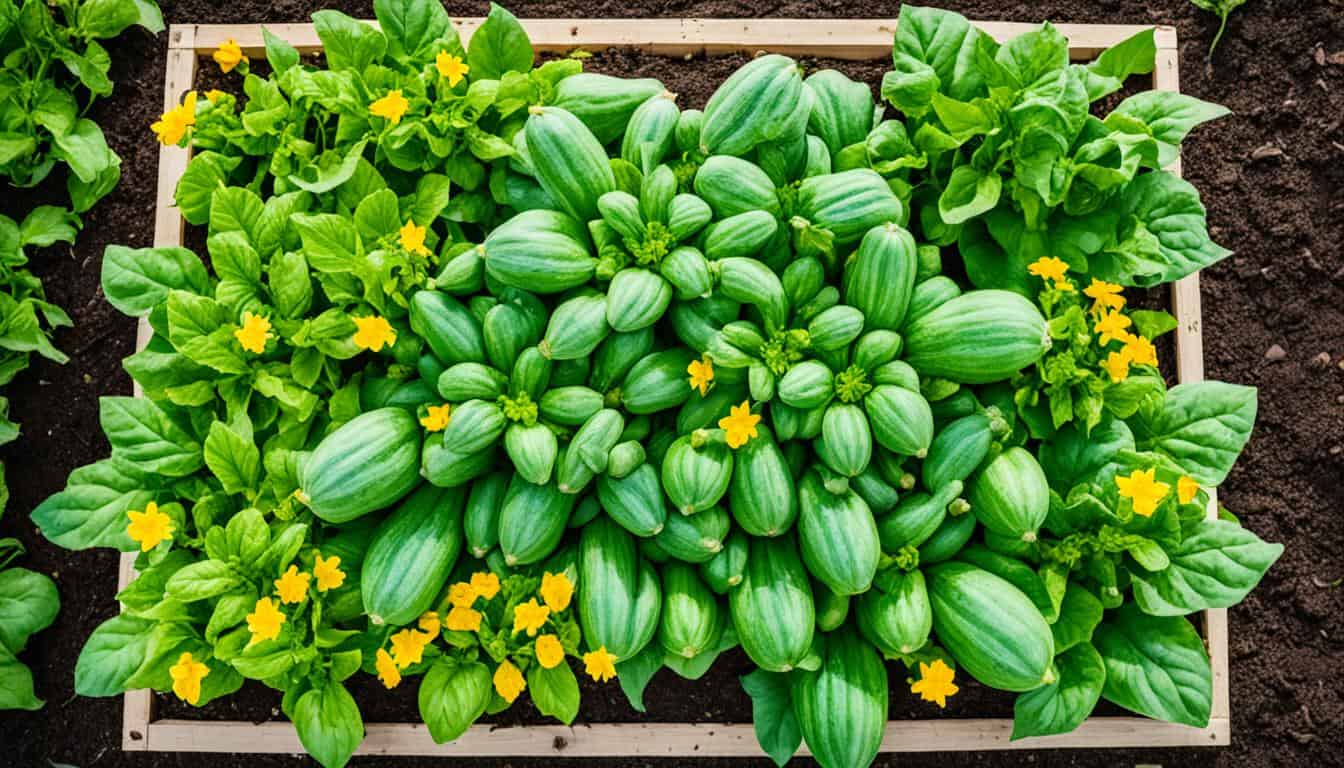
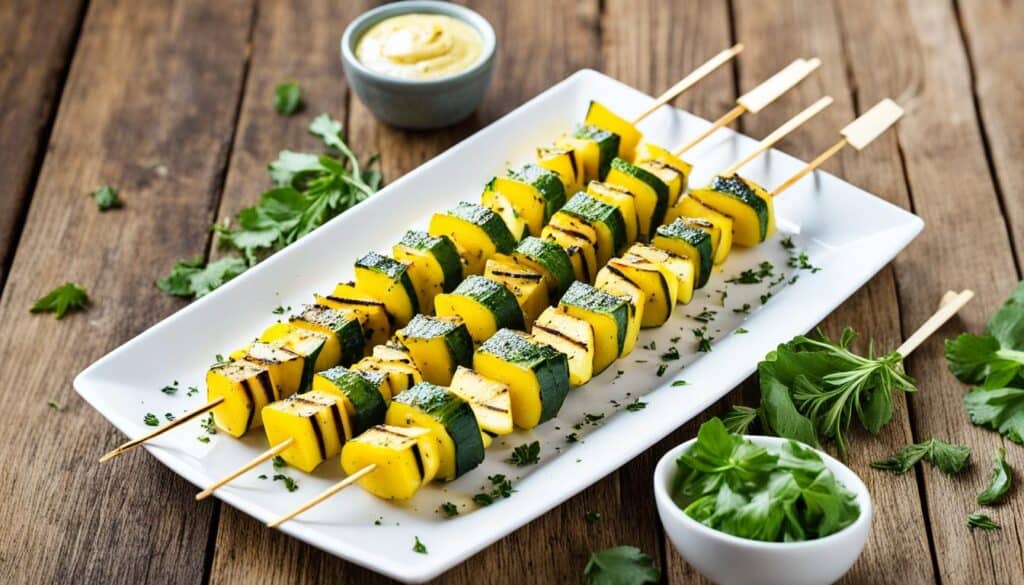
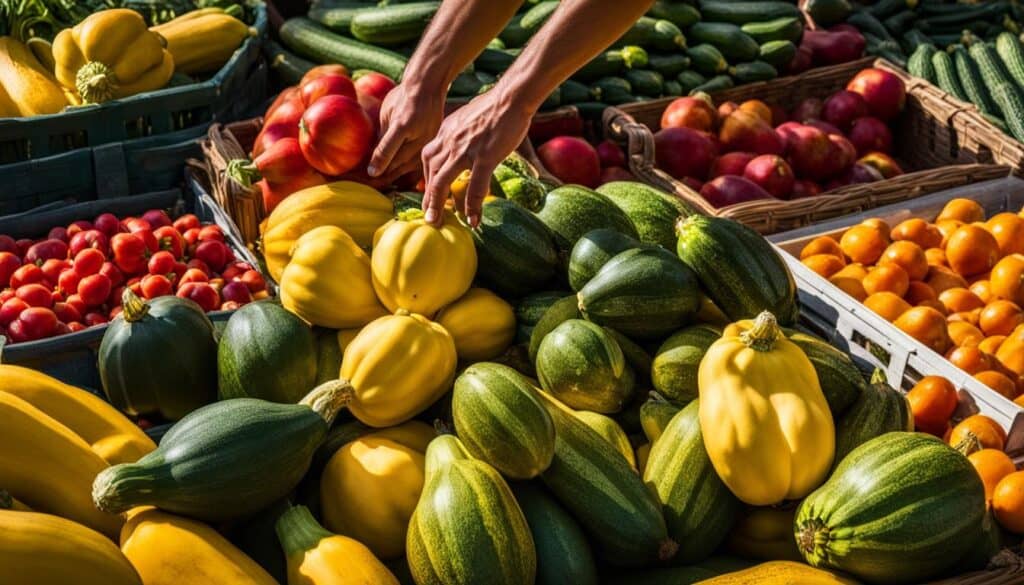
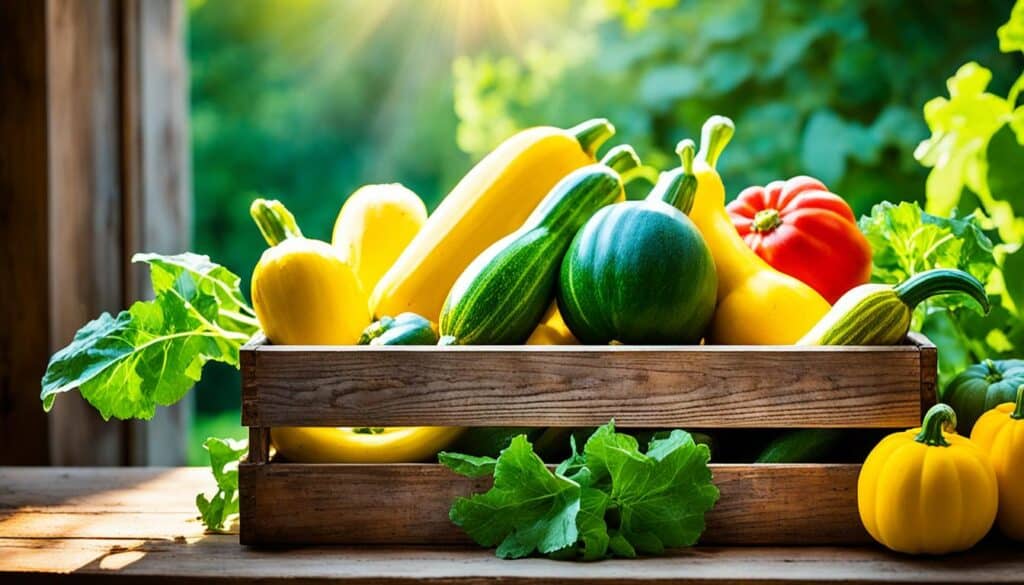
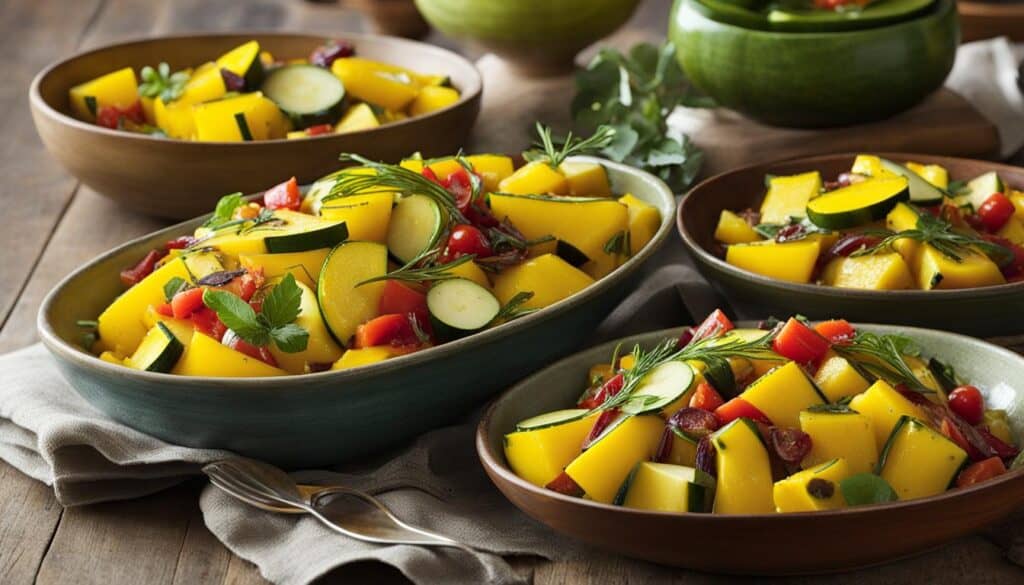




Leave a Reply